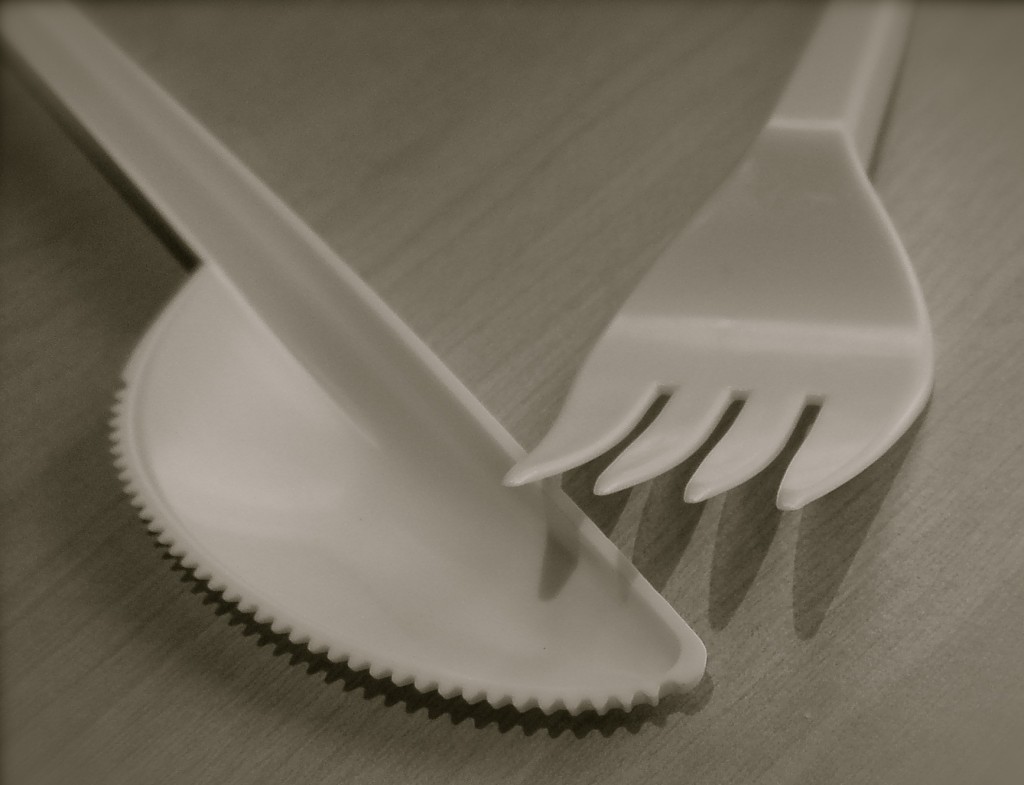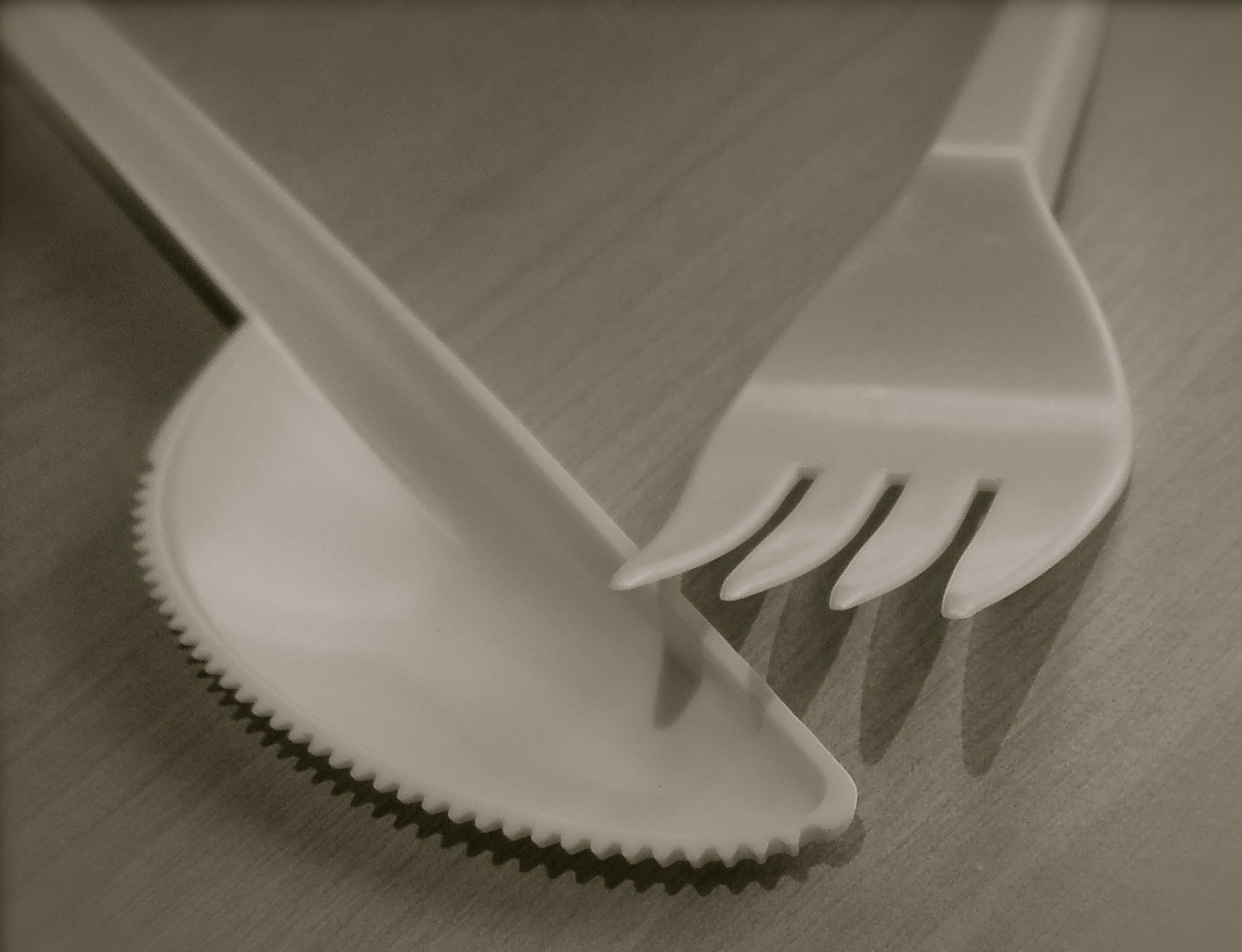By Katie Stobbart (The Cascade) – Email
Print Edition: January 7, 2015

At the end of last semester, Sodexo implemented a 20-cent “eco-charge” on cafeteria meals when you get a disposable container instead of a plate. Maybe 20 cents for a container here and five cents for an extra fork there isn’t the biggest burden on students — but anyone who has to rely on coin laundry knows those quarters can add up.
The reason for the charge, according to Sodexo’s general manager Douglas Fowler, is sustainability. It’s the same reasoning many grocery stores gave when they started charging for plastic bags: disposable products like plastic and styrofoam are a bigger burden on our planet than they are on our pocketbooks. The argument is that a small charge makes consumers aware of their impact, instead of taking disposable products for granted.
However, whether or not eco-charges have merit, there’s something about Sodexo’s approach that doesn’t fly with sustainability: the disappearance of silverware.
In an email response to The Cascade’s news brief informing students about the eco-charge, which was printed in the last issue of the fall semester, Fowler defends Sodexo’s side of the story.
“Incidentally,” he writes, “it would be more cost effective for Sodexo to eliminate a dishwashing position and to rely entirely on disposables, but that would be irresponsible.”
He also notes that “actions speak much louder than words or glossy brochures.”
Yet the metal cutlery the cafeteria once set out on a counter alongside disposable cutlery, salt, and pepper has been replaced by stacks of shiny leaflets. The plastic cutlery and seasoning have been removed, and are now kept behind the counter.
Okay, move the forks. But relying on disposables is inconsistent with Sodexo’s position.
Furthermore, this isn’t a grocery store — it’s a university cafeteria. Its patrons are mainly students who have about 15 or 20 minutes to grab food and go, usually to eat it in their next class.
Unless Sodexo is expecting students to bring ceramic plates to class with them, the eco-charge acts as a kind of punishment for students who don’t have large blocks of time to sit in the cafeteria and eat.
UFV and its students are interested in sustainability. This year, for example, water fountains on campus now feature refill stations so it’s easier to bring reusable bottles instead of relying on plastic ones. Judging by the climbing counters tracking water bottles saved at those locations, I’d say the new stations are a success.
If Sodexo’s motive is purely to pursue sustainability, there are other ways it could do that. Disposable containers don’t have to be styrofoam; they can be made of biodegradable or compostable materials. If Sodexo is set on having an eco-charge, it could match funds raised and donate it to projects promoting sustainability on campus.
Though Sodexo is a distinct entity from the university, it’s still part of our campus for as long as its contract lasts. There’s no reason it shouldn’t endeavour to find sustainable options that meet students’ needs instead of taking away the pennies we’re already pinching.


